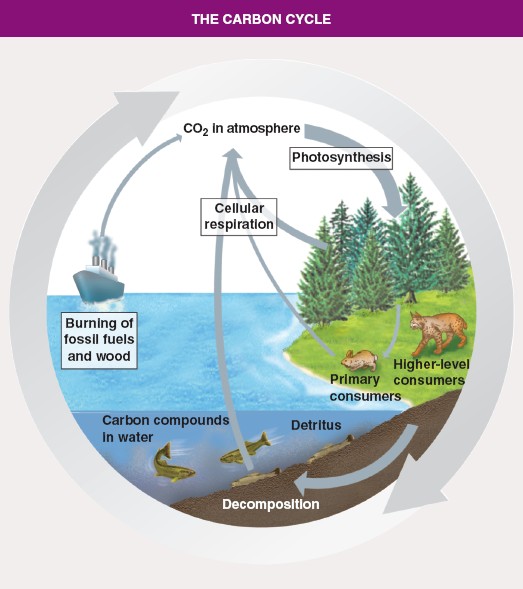 THE CARBON CYCLE
THE CARBON CYCLE
Forms available to life: Photosynthetic organisms convert CO2 to organic forms used by consumers.
Reservoirs: The major reservoirs include fossil fuels, soils, aquatic sediments, oceans (dissolved compounds), plant and animal biomass, and the atmosphere. The largest reservoir is sedimentary rocks such as limestone, though this pool turns over very slowly.
Key processes: Photosynthesis by plants and phytoplankton removes substantial amounts of CO2 each year, balanced by CO2 released through cellular respiration. The burning of fossil fuels is adding significant amounts of additional CO2.